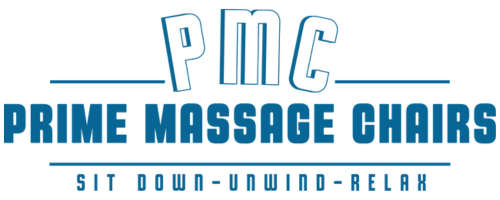
Does Deep Tissue Massage Hurt?
Does deep tissue massage hurt? It’s true that this type of massage may sometimes be uncomfortable.
For those new to this therapy, the answer depends on what you expect from the experience.
This article will help you understand why it may feel that way and how to make it better.
Keep reading to find out more!
What is Deep Tissue Massage?
Deep Tissue Massage (DTM) may focus on the deeper layers of muscle fibers and connective tissues.
The primary goal is to address deeper muscle issues using specific techniques.

These techniques include slow, firm strokes and pressure on targeted areas. This approach may help break down scar tissue and relieve muscle tension.
It differs from other massage styles, such as Swedish or sports massage, by targeting chronic discomfort and tight areas more effectively.
Physical and occupational therapists often include DTM in treatment plans.
Results may vary based on individual conditions and the techniques used by therapists, which helps provide a more personalized and effective approach.
This method can be beneficial for those seeking lasting pain relief, better mobility, and improved circulation.
While methods may vary, the core aim of reducing deep tissue problems remains consistent across health professions.
Deep Tissue Massage addresses profound issues within muscle layers, offering a path to healing and relief.
Next, we’ll discuss why this particular massage style may lead to some discomfort during a session.
Why Can Deep Tissue Massage Hurt?
Deep tissue massage often targets deeper muscles and connective tissues. This type of massage uses firm pressure to address muscle knots and adhesions.
It can feel uncomfortable because it targets areas of the body that are not accustomed to such deep manipulation. This type of massage may also be used on shin splints.
The aim is to relieve pain and stiffness, but the process might feel intense at first.
Breaking Down Muscle Adhesions
Muscle adhesions are tight spots in muscles and connective tissues, often felt as knots.
These knots can cause pain and restrict movement. A deep tissue massage works to break these down using strong pressure.
The therapist may use fingers, knuckles, or elbows to apply pressure.
During the massage, some individuals may find the pressure too intense. Studies indicate that 55% of clients feel the pressure is too strong, while 20% report discomfort due to improper focus during the session.
However, breaking down muscle adhesions may alleviate chronic pain and improve mobility.
Increased Pressure on Sensitive Areas
Deep tissue massage targets the deeper layers of muscle and surrounding tissues. This can apply pressure to sensitive areas, leading to discomfort.
It’s similar to pressing on a sore spot.

Sensitive areas may react more strongly to firm touch. The pressure helps reduce scar tissue and untangle muscle knots.
Finding the right pressure level is crucial. Certain medical conditions, such as osteoporosis or bleeding disorders, may require modified techniques or professional advice to ensure safety and effectiveness.
Excessive force may cause bruising, swelling, or tissue damage.
Research indicates that too much pressure can trigger the release of acidic substances (pH 4.2) and pain-inducing chemicals near muscle trigger points.
Therapists must be cautious to avoid causing harm while aiming to promote healing.
Next, let’s differentiate between pain and discomfort during a massage.
Pain vs. Discomfort: Understanding the Difference
Pain and discomfort during a deep tissue massage are different. Additionally, pain feels sharp and signals that something may be wrong.
It makes you want to stop or pull away. This type of pain can increase muscle tension and potentially cause harm.
Discomfort, on the other hand, feels like a stretch or pressure in tight muscles. It indicates the massage is addressing problem areas but should not cause harm.
The idea of “no pain, no gain” does not always apply to massage therapy. Experts emphasize the importance of balancing effectiveness with comfort.
Open communication with your therapist helps achieve the right balance.
Next, we’ll explore how deep tissue massage provides potential benefits for chronic pain relief and improved range of motion despite potential discomfort.
Benefits of Deep Tissue Massage Despite the Pain
Even though deep tissue massage can be intense, it offers significant benefits such as relieving chronic pain and improving mobility.
Relief from Chronic Pain
Deep tissue massage penetrates muscles and connective tissues, and may provide relief from chronic pain. Studies, including one from 2018, show that this therapy reduces pain and enhances mobility.

People with persistent back pain often experience significant improvement after these massages.
This therapy also aids in faster recovery from injuries by reducing stiffness and increasing blood flow.
However, these benefits may not apply to all injuries or conditions. It is recommended to consult a healthcare provider to determine if deep tissue massage is appropriate for your specific situation.
For conditions like ankylosing spondylitis, a type of spinal arthritis, it can greatly alleviate discomfort.
If you deal with ongoing muscle pain or are recovering from sports injuries, deep tissue massage can provide meaningful relief and support your recovery.
Improved Range of Motion
Deep tissue massage benefits those with limited mobility. Studies suggest it may help people with conditions like ankylosing spondylitis move more freely.
A 2017 study on the effects of deep tissue massage and therapeutic massage supports this potential benefit.
Their range of motion improves significantly compared to standard therapies.
Athletes also gain from this therapy. Breaking down scar tissue and releasing tight muscles enhances their performance by increasing flexibility and reducing restrictions.
How to Minimize Discomfort During a Deep Tissue Massage
To make your deep tissue massage more comfortable, communicate with your therapist. They can adjust their techniques to suit you.
Additionally, practice deep breathing to help relax during the session. These tips can help you enjoy the benefits of the massage more.
Communicating with Your Therapist
Talking to your massage therapist is essential. Let them know what level of pressure feels right.

This ensures the massage is effective without being overly painful.
Studies reveal that 55% of clients switched therapists due to excessive pressure, while 20% left because the pressure was too light.
Your therapist should regularly check in with you during the session. Speaking up about discomfort ensures the therapy remains beneficial and comfortable.
Breathing Techniques
- Focus on your breathing during the massage. Deep breaths can help relax your body.
- Inhale slowly through your nose, allowing your stomach to rise, and exhale slowly through your mouth.
- Research supports that deep breathing reduces anxiety and enhances relaxation during therapy sessions.
- Next time you’re on the massage table, concentrate on your breath. It can transform the experience from tense to soothing.
FAQs
What Is a Deep Tissue Massage, and How Does It Differ from Other Types of Massage?
Deep tissue massage is a therapeutic technique targeting deeper muscle layers and connective tissues, unlike Swedish or hot stone massages.
It is often used to treat chronic tension, trigger points, and lower back pain.
Is It Normal for a Deep Tissue Massage to Cause Discomfort or Even Be Extremely Painful?
While deep tissue massages can be intense, they should not be extremely painful. The pressure should remain within your comfort level.
How Can I Relieve Soreness After a Deep Tissue Massage?
To relieve soreness, drink plenty of water to flush out toxins, and use relaxation techniques to aid recovery.
Can One Deep Tissue Massage Help with Physical Pain?
Yes! Many people experience relief from muscle tension and pain after one session, especially for conditions like fibromyalgia or temporomandibular joint dysfunction.
Do I Need to Communicate with My Therapist About Potential Risks and Side Effects During Treatment?
Absolutely! Open communication helps your therapist ensure the treatment is effective without causing unnecessary discomfort.
Are There Psychological Benefits to Deep Tissue Massage?
Yes! Beyond physical relief, deep tissue massage can reduce stress and promote relaxation, contributing to overall mental well-being.
Conclusion
Deep tissue massage feels different for everyone. While some may find the pressure helpful, others might find it too much. It's important to know what to expect from the experience before hand.
Communicating with your therapist about what feels right could make the experience more effective and enjoyable.
Though it may be uncomfortable at times, deep tissue massage offers valuable benefits for many people.
Disclaimer:
We do not provide medical advice. The content of this article, including text, graphics, and other material, is for informational purposes only. It is not intended to be a substitute for professional medical advice, diagnosis, or treatment. Always seek the advice of your physician or other qualified health provider with any questions you may have regarding a health condition. Never disregard professional medical advice or delay in seeking it because of something you have read in this article or on our website.
